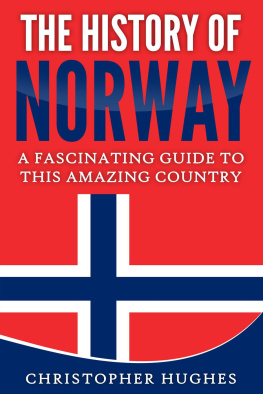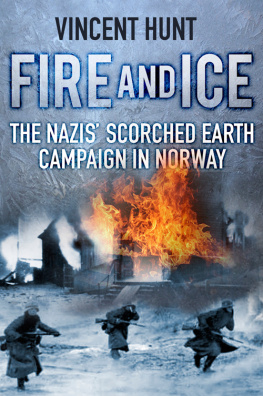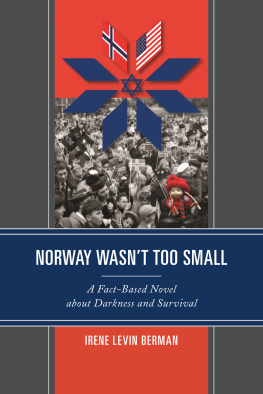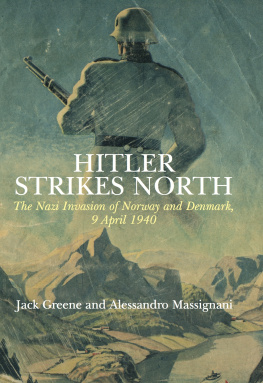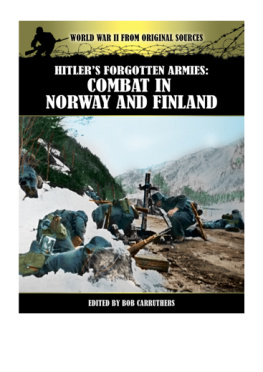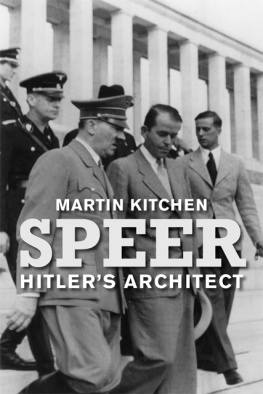Contents
Guide

Hitlers
Northern
Utopia
Hitlers
Northern
Utopia
Building the
New Order
in Occupied
Norway
DESPINA STRATIGAKOS
Princeton University Press | Princeton and Oxford
Copyright 2020 by Princeton University Press
Requests for permission to reproduce material from this
work should be sent to
Published by Princeton University Press, 41 William Street,
Princeton, New Jersey 08540
In the United Kingdom: Princeton University Press, 6 Oxford Street,
Woodstock, Oxfordshire OX20 1TR
press.princeton.edu
Jacket illustrations: (front top) Scenery observed by Adolf Hitler on board the Deutschland in the Norwegian fjords, April 1934 (detail). Adolf Hitler: Bilder aus dem Leben des Fhrers. Altona/Bahrenfeld: Cigaretten-Bilderdienst, 1936; and (front bottom and back): Undated model of Narviks reconstructed center, with obelisks in front of the marching square by the Parteihaus (detail). Lars Olof Larsson Collection, Kiel.
All Rights Reserved
ISBN 978-0-691-19821-7
ISBN (e-book) 978-0-691-21090-2
Version 1.0
British Library Cataloging-in-Publication Data is available
Designed by Chris Crochetire, BW&A Books, Inc.
To my father
for lessons on politics and politicians
and on reading between the lines
Contents
ix
Acknowledgments
T he germ of this book goes back many years, to a chance encounter in the German Federal Archives in Berlin. While researching another subject, I came across a file about Hitlers secret plans to build a city in occupied Norway. I knew nothing about the Nazis building projects in this northern country and could find little in the history books to enlighten me. In the long interval between that initial discovery and the completion of this manuscript, I was joined by many colleagues and friends in the quest to unravel an archival mystery.
The project was launched at the Art in Battle conference held in Bergen in August 2014, which brought together an international group of scholars to explore how art was used for propaganda during the Nazi occupation of Norway. I would like to thank the organizers and participants for encouraging me to turn the fragmentary story about architecture that I presented there into a full-fledged book: Line Daatland, Terje Emberland, Matthew Feldman, Christian Fuhrmeister, Anita Kongssund, Gregory Maertz, Dag Solhjell, Erik Tonning, James van Dyke, and Eirik Vassenden. I am also grateful to Shelley Hornstein, Paul Jaskot, Barbara Miller Lane, and Clarence B. Sheffield Jr. for their enthusiasm and support in the projects exploratory stages.
Over three consecutive summers, from 2015 to 2017, Lars Olof Larsson opened his collection and home to me in Kiel. His unstinting help with my research has profoundly shaped the book. In Oslo, Ketil Gjlme Andersen welcomed me with a personal tour of an exhibition he curated on the Organisation Todt and, later, shared his writings and offered feedback on mine. Mari Lending hosted me in Oslo and connected me to her professional networks. At the Army Museum in Trondheim, Frode Lindgjerdet spent hours guiding me through their archival collections and tracking down additional local sources. Michael Stokke shared his research on prisoners of war in ysand. Helga Stave Tvinnereim went above and beyond in closing some research gaps concerning Sverre Pedersen. I am grateful for my fabulous research assistants, who pursued images and texts while completing their own graduate studies in history and architecture: Sophia Clark, Ingrid Roede, and Alexander Tunby Rosseland.
A number of organizations have generously supported my research and writing. I received grants to travel to archives in Germany, Norway, and the United States from the Graham Foundation for Advanced Studies in the Fine Arts, the American-Scandinavian Foundation, and the American Philosophical Society. In 201617, I had the honor of being a member of the Institute for Advanced Study in Princeton. During that year, in IAS workshops and lunchtime conversations, the formless mound of research collected on archival trips was distilled and refined into book chapters. I am indebted to Yve-Alain Bois as well as to Roland Betancourt, Malcolm Bull, Emine Fetvaci, Yu-chih Lai, Rebecca Maloy, Daniel Sherman, and Nancy Sinkoff. After my return to the University at Buffalo, Robert Shibley and Charles Zukoski ensured that I would have the time I needed to complete the whole.
At Princeton University Press, I had the pleasure to work once again with Michelle Komie. Her many contributions to this book, including lively meals in Lambertville, made this project a joy. The manuscripts two anonymous readers gave excellent advice on structuring the narrative. I owe a special debt to Nancy Eklund Later, who, with wit, elegance, and a sure step, accompanied me through the thickets of writing. Credit for the smooth finish goes to Lauren Lepow and her fine editorial skills.
To the friends and family members who turned up in Berlin, Oslo, Trondheim, and other placesthank you for getting me out of the archive. I am glad I had the chance to walk the shores of ysand on a freezing day in August, bowl in a former German submarine bunker in Trondheim, and listen to jazz in Molde. We should do it again.
Hitlers
Northern
Utopia
Introduction
Hitler in the Fjords
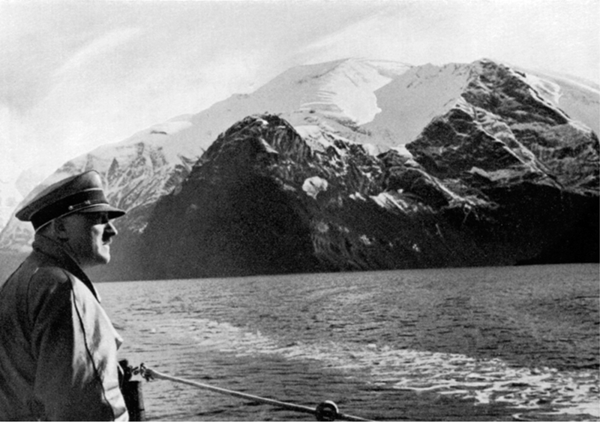
i.1. Adolf Hitler observes the scenery on board the Deutschland in the Norwegian fjords, April 1934.
T he weather was exceptionally beautiful on Thursday, April 12, 1934, when Hitler cruised into the Sogne Fjord on Norways west coast (). He was sailing on the Deutschland, Germanys new pocket battleship, accompanied by naval commander in chief Admiral Erich Raeder and defense minister Colonel General Werner von Blomberg. The voyage was not publicized, surprising Germans and Norwegians alike when news of it leaked to the press. It was Hitlers first journey abroad since becoming chancellor, yet no one could say what he was doing in Norway.
The Norwegian government had been given little warning that the Deutschland was coming. German Foreign Office records in Berlin reveal a hastily planned trip. A telegram sent to the German Embassy in Oslo on April 7 asked that the local government be informed of the ships training exercises, which might involve passage through Norways territorial sea. There was no intention to enter the countrys inland waters, which required permission from the Norwegian government.
But a last-minute change of plans to tour the Sogne Fjord in order to show guests on board its scenic beauty left German diplomats in Oslo scrambling to alert Norwegian authorities before the battleship entered the fjord at 7:30 a.m. on April 12. A German Foreign Office memo composed later that day now described the voyage as a short vacation for the Fhrer, the admiral, and the defense minister, and made clear their intention to travel quasi-incognito, without flying their respective flags. As a result, they expected the presence of the ship to garner little attention from the Norwegian side.
The secret of who was on board was quickly exposed, however, when a Norwegian pilot, Martin Karlsen, embarked to navigate the heavy cruiser through the fjord and was greeted by a smiling Hitler. Interviewed by the Norwegian newspaper Tidens Tegn (Sign of the Times), Karlsen enthused over the German chancellor and star passenger: He went around the deck and talked to everyone, sailors and officers, and their rank did not seem to matter to him. Everyone on board really liked himat least, that is my impression. I thought he was a pleasant and convivial man.... He was so modest, and the only medal that hung on his suit was the Iron Cross that he was awarded during the world war for personal valor. He was easygoing and friendly with the sailors on board. Moreover, his behavior was completely similar toward the generals and the subordinates.



